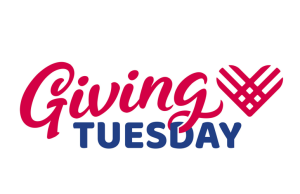Across virtually every demographic — age, gender, race, income, education and household size — more people are heading for the Internet before they make a charitable donation. And if you still think seniors are channel surfing for repeats of “Murder, She Wrote” instead of surfing the Web, you’d be wrong.
According to a new The NonProfit Times study, twice as many potential donors are heading online after receiving a fundraising solicitation by mail than they did just three years ago, and among those 65 and older, the increases were even more substantial.
The NonProfit Times engaged the Opinion Research Corporation (ORC) in Princeton, N.J., to repeat a study it performed three years ago for The NPT. ORC asked a nationally-representative sample of 1,000 adults 18 and older: “When you receive a mail solicitation from a charity, which of the following places on the Internet do you look at before deciding whether to give money?” The results are projectable to the U.S. population.
Survey participants could choose more than one of the following options: look up organizations on the Internet; go to organization’s Web site; go to the sites of independent rating organizations; go to online discussion groups and/or blogs.
The percentage of people who said that they looked up the organization on the Internet jumped from 25 percent when the survey was done three years ago to 44 percent this year. Those who said they went to the organization’s Web site just about doubled, from 19 percent to 37 percent of those who responded that they went online.
Conversely, the percentage of people who said they don’t look up the organizations on the Internet declined from 61 percent in the 2005 survey to 47 percent now. (Some 13 percent replied: “Don’t know/None of these” three years ago while 10 percent chose that option this time.)
“It’s another clear priority certainly to any nonprofit that’s doing direct mail,” said Rick Christ, managing partner with Warrenton, Va.-based npadvisors.com, indicating that nonprofits investing in their own Web site can satisfy nearly half the people. “That’s a really powerful thing that says, your own Web site is more important in supporting a direct mail package than it’s ever been,” he said.
The survey results show a trend that “we’re seeing pretty clearly, more people are online, more people are doing research online, checking out charities they support or are thinking about supporting,” said Nick Allen, CEO of Donordigital, a San Francisco-based onlinefundraising firm.
Allen said that 20 years ago those potential donors who did their due diligence would likely be calling reference librarians. “Now, those people just go online and have access to an organization’s Web site, Charity Navigator, GuideStar,” he said.
“Direct mail costs more than it ever cost, and it’s going nowhere but up,” said Christ, imploring nonprofits to do whatever they can to help their direct mail package. A nonprofit’s Web site should try to support direct mail, but not replace it, he warned.
“I don’t see online donations being yet so second nature to people, or as convenient as writing a check. That mail should be primarily a drive to the Web site. It costs so little more if you’re going to mail a package to stick a reply form and envelope in there,” he said.
Even now, 47 percent don’t go online after receiving a direct mail solicitation, according to the national study. “And we don’t know which 47 percent, so you’ve still got to put a reply envelope in each package,” Christ added.
“Direct mail is the way most people hear about most organizations, short of a disaster, that causes them to do things,” Allen said. In most instances, he said, people get direct mail from groups they already know and are familiar with; it’s the ones they don’t know that they search out on the Web.
“Given the numbers of people going online, it’s critical that nonprofits have a terrific user experience when someone hits their Web site, because it’s going to happen more and more,” said Vinay Bhagat, founder, chairman and chief strategy officer at Convio in Austin, Texas. He made the analogy of making sure your office or facility is looking its best when a donor tours the site, adding that there’s still a big opportunity for nonprofits to effectively drive a better experience for donors.
Who’s doing it
It’s not just the young whippersnappers with iPhones who you might think are surfing the Web. Sure, among 18- to 24-year-olds, the percentage saying they look up the organization online doubled, from 31 to 64 percent. But among those older than 65, it almost tripled, from 8 to 21 percent.
While almost three-quarters of the oldest demographic said they didn’t look online three years ago, that figure improved to 60 percent. For the youngsters, more than half (51 percent) said they didn’t three years ago, and that now has dropped to 30 percent.
A third of respondents younger than 34 years old said they don’t go online compared to 50 percent three years ago. Among older demographics, going online before writing a check ranged — 42 percent among 35- to 44-year-olds, 51 percent among 45-54, to 48 percent for 55-64 Ð but all were down from 60 to 70 percent in 2005. All demographics, however, saw at least double-digit declines in that category.
Typically, education and income are factors to Internet access and usage. For the most part, the survey results bear that out, however, respondents in the lowest income categories saw the highest increases for looking up the organization online. Among those with annual incomes of less than $25,000, only 14 percent said they went online in 2005 but that was up to 41 percent this year. Among those earning $25,000 to $35,000, the number increased from 21 to 49 percent. Wealthier demographics also saw increases, though not nearly as sharp, but still eclipsing half among those $50,000 and up.
More than half (53 percent) of college graduates said they go to the Web to look up the organization, up from 35 percent in 2005, and considerably more than those who didn’t complete college (41 percent), have a high school diploma (39 percent) or didn’t finish high school (29 percent). All the categories, however, experienced increases from three years ago, especially those who didn’t finish high school, which rose from just 9 percent three years ago.
Men are slightly more likely than women to reach for the Internet these days (46 percent versus 41 percent), but both said they are more likely than three years ago (26 percent versus 25 percent). The online sources they turned to also were consistently twice as high as in 2005 and strikingly similar for both genders.
By race, whites, blacks and Hispanics all saw increases in the percentage saying they go online, though it wasn’t nearly as substantial a jump among Hispanics, with almost two-thirds saying they don’t look to the Web.
Some 23 percent of those identifying as Hispanics said they went online to look up the organization in 2005, and that figure was up to only 30 percent this year. By comparison, among whites the figures went from 26 percent in 2005 to 44 percent this year, and for blacks, from 28 percent to 59 percent. For those who said they went to an organization’s Web site, Hispanics again rose only slightly, from 18 percent to 21 percent, while bigger jumps were experienced among whites (19 to 37 percent) and blacks (26 to 52 percent).
Hispanics were one of the few categories where the percentage who said they don’t look up the organization online actually increased, albeit just from 59 percent to 60 percent. Meanwhile, in most every demographic, the percentage of people who said they don’t look up the organization online plummeted. For whites, it dropped from 63 percent in 2005 to 46 percent and for blacks, from 62 percent to 35 percent.
Blogs, blogs, blogs
“Not only are people looking you up, they’re looking you up in more places, not just one,” Christ said. More people are looking at the Web site and going to a blog or a ratings site for more information, Christ said: “That goes to Web penetration but also to Web savvy, people know where they can look. There’s more connectivity, people have more friends online.”
In addition to more people saying they went to a nonprofit’s site, more people also said they visited independent rating organizations, up from 11 percent to 24 percent; online discussion groups, from 3 percent to 10 percent, and blogs, from 2 percent to 8 percent.
Although 60 percent of the youngest demographic surfed toward the organization’s Web site (as compared to 28 percent in 2005), some of the biggest jumps among other sources people went to were blogs, especially for youngsters. Only 3 percent of those 18-24 said they went to blogs three years ago, compared to 20 percent in this year’s study. For other age demographics, blogs rarely registered in double digits, if even more than a few percentage points, but still rose. Even among those 25-34, 11 percent said they go to blogs and that was still up from 4 percent in 2005.
By income, blogs registered some of the biggest percentage increases, though they generally jumped from very small to small numbers, in some cases tripling, for instance, from 2 percent to 7 percent for three different income categories. Among those earning $25,000 to $35,000, blogs didn’t even register three years ago, but today 11 percent said they visit blogs.
The use of forums and blogs is still quite low as a channel and while traditional donors are in these forums, they are far less significant than a nonprofit’s own Web site, said Convio’s Bhagat. Only a subset of donors are active in social media today and while that’s growing, he said it’s not nearly as important as the core Web site yet.
Web-induced Transparency
“The big theme here is the Internet brings transparency,” said Holly Ross, executive director of Portland, Ore.-based NTEN, a membership organization for nonprofit technology professionals. “Donors can access anytime, day or night, so this is an opportunity to be as transparent as possible and start to develop trust with a donor from the very beginning by having all the information accessible and up front on your Web site,” she said.
Ross said the survey results confirm some of the things seen in other recent surveys, including donations from having a good, transparent Web site.
“Those are increasing so you have to assume that people are going online when they hear about a charity, looking it up, and taking action by giving immediately,” she said. Surveys also indicate that major donors are going online to vet charities. “Increasingly, donors are using these online tools for sure,” Ross said. “It’s all in line with what you expect to see happening.”
Maybe some people are a little bit more suspicious when they get online solicitations, fearing potential phishing scams, Allen said. “What we’re definitely seeing is people using it [the Internet] more,” he said, adding that one of the primary uses of the Internet is research.
Both Allen and Christ are unconvinced of just how many people claim to have visited rating organizations’ Web sites. Suggesting that they’re probably over- reported, Christ said, “It’s too much work, their sites are too confusing. I downplay the importance of those sites, but not completely.” The survey, however, does emphasize the role of the Web in general, and to some extent those other sources, like blogs, increasing even its small percentages from three years ago.
In focus groups by Donordigital, Allen said certain people say they visit Charity Navigator or the Better Business Bureau’s Wise Giving Alliance, but that anecdotal data just simply doesn’t jive with the hard data. Allen offered an example: if a large organization sent a million pieces, and 10 percent of them were opened by recipients, based on the survey results, that would mean 24,000 people visited ratings Web sites. He just hasn’t seen such high figures come out of their focus groups, and only a “tiny fraction” of people getting direct mail likely visit those sites.
“The macro-message is more individuals want to do research before giving to a charity,” Bhagat said, and they know how to look up a nonprofit, whether that’s through a rating site or an Internet search. For the most part, people know where they’re going, he said, as search engine marketing finds that the most common words that result in a clickthrough are an organization’s name. For instance, when people search for Operation Smile, they rarely type in “cleft lips,” but instead type the organization’s name.
“Consumers are attuned to the fact that the Web is a research mechanism and they want to do this added level of diligence before making contribution,” Bhagat said.
Christ emphasized the importance of a nonprofit’s Web site to support its direct mail package. “The Web didn’t generate those gifts on its own. It merely collected them,” Christ said. Passing the plate in church isn’t what generates gifts, he theorized, but “ask any pastor, he’ll tell you it’s the sermon. The organist will tell you different. Even the usher will tell you it’s the passing of plate.”
Integrating Web & direct mail
“A big chunk of people getting this package — prospects especially I guess — will go to your site to check you out,” Christ said. He suggests including a link in your direct mail package and building part of your Web site to support a particular mailing; a place on your site that answers basic questions, where nonprofits also could post their financial information. “Try to resolve all the issues there so people can see the benefit of giving right there on the spot,” he said.
Ross suggested reinforcing the direct mail pieces with similar language and images on your Web site. Some integrated marking appeals include an email appeal to the same people about to receive a direct mail package, sending them to a landing page that more closely resembles the direct mail and the email appeal they just received, she said.
Sometimes nonprofits’ Web sites see increased traffic after a mailing, Allen said, while in other cases organizations also can trace a particular package by putting certain coding or including a Web address specific to that mailing. He estimates that for every 10 people who donated through the Web site after receiving a direct mail package, as many as 100 people probably came to look at the site.
“The Web site can be pretty important because a lot of donors do go to your Web site to check you out,” Allen said. He suggested including an image of the mailing, a graphic or words so people who get the mailing and visit your Web site find something that relates to what they received in the mail. NPT












